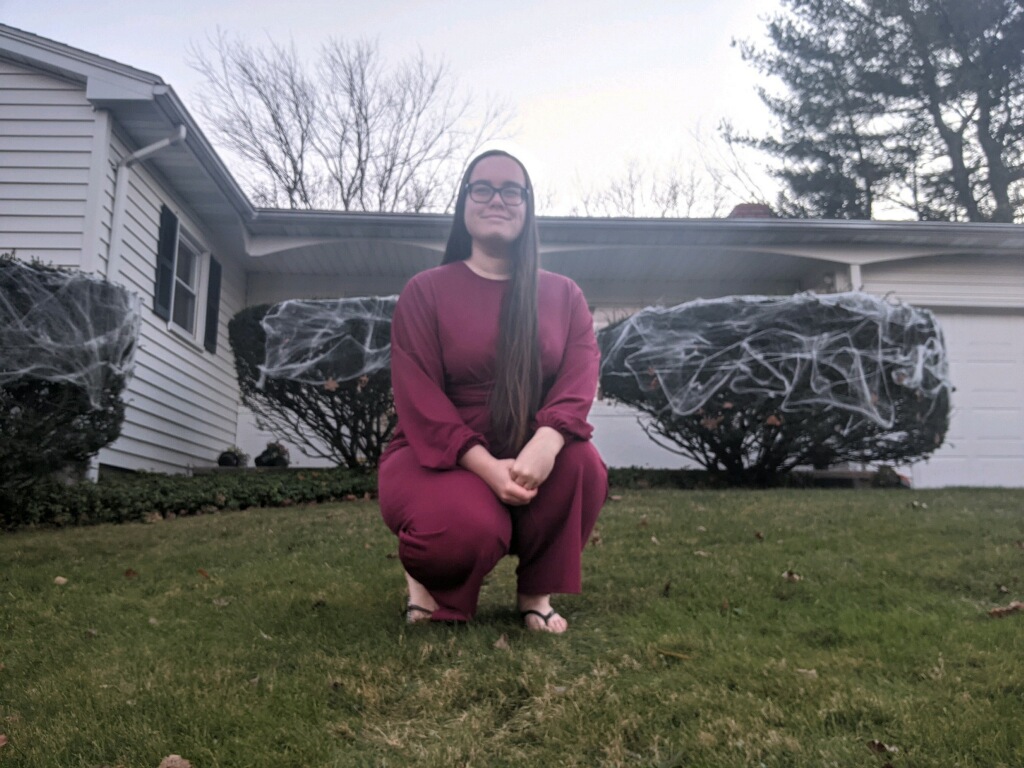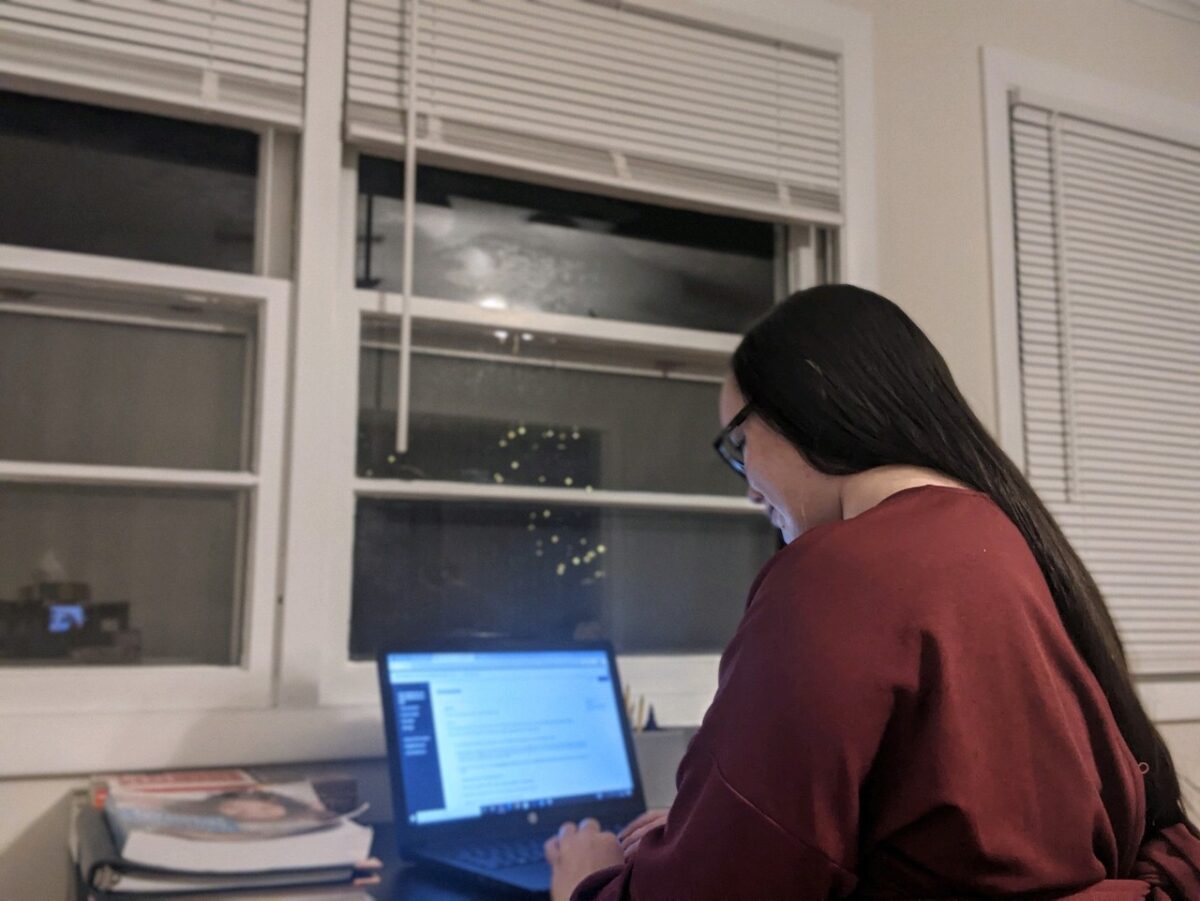COVID-19 has disrupted higher education in a way that few would have predicted, and some students seem to have taken advantage of the moment by creating a new form of the college experience.
This fall, students threaded the needle between studying remotely and enjoying the traditional social life and freedoms of the college experience.
James Miskiewicz, a senior psychology major at Quinnipiac University from Norwich, Connecticut, lives in Hamden, where the main campus of the 10,000-student school is located.
Hannah DeWitt, a junior early childhood education major at Gateway Community College from Tuftonboro, New Hampshire, also lives in Hamden, minutes away from the main New Haven campus of the 5,000-student school.
They do not have any in-person classes. They never step on campus. They are trailblazers of sorts, pioneers in the art of remote learning while living the college lifestyle of friends and independence.
“I wasn’t sure if this was actually going to be a full semester,” Miskiewicz said. “I didn’t want to commit and go through the whole process.”
He has been living off-campus for two years and already has lots of friends. He spent most of his on-campus years making those friends and networking with professors.
Miskiewicz said that he didn’t believe that students are getting the same experience. Students don’t stick around after class for informal conversations with each other or the professor, an important part of the experience as learning occurs in that space between one class and another.
DeWitt went a step further. She took a medical leave of absence from Quinnipiac last spring. As COVID-19 raged, she decided to finish school at a cheaper site.
“In my mind, there was no way Quinnipiac was worth it anymore,” DeWitt said. “I love Hamden and its beauty, but I can still be in town and get the same experience but at a much cheaper rate.”
Yet, the new reality feels natural. Both have settled into a routine that works for them, customizing their experience to maximize their success.
Miskiewicz treats his classes like a job. Most of his classes are asynchronous, meaning they can be viewed and completed at any time of the day.
“I would normally have a scheduled class fixed schedule class at 1 o’clock and something comes up,” he said. “I don’t have to navigate around that. That’s the flexibility I always talk about. It’s the ability to really make school fit to your schedule, because I do have obligations outside of school that I also have to meet.”

On the other hand, Dewitt can keep a schedule and routine, helping her with a sense of normalcy.
“I have more flexibility in my schedule, but I still try and do my classes as if I were going to class everyday,” she said. “But it’s nice that with a semester as stressful as this, if I have a bad day I don’t start falling behind and panicking.”
Some worry about the quality of the education, but Miskiewicz hasn’t experienced any degradation in lessons. He takes his classes where he is, sometimes in Hamden, sometimes back home in Norwich, sometimes at his job during down time. In his world, college works to his schedule and doesn’t dominate his life.
“The pro consequences of that is I’ll plan my agenda further ahead,” he said. “And that’s something that I’ve been doing consistently. And I think I maybe had the opportunity to because classes are online and I have this afforded free time.”
DeWitt sees the other side. She thinks that the education quality drop is universal, so she really isn’t missing much.
“I don’t think there is a professor in the entire world who was prepared to use Zoom,” she said. “That drop was going to happen no matter what. So I may as well save a ton of money.”
DeWitt’s version is less expensive. Quinnipiac room and board for seniors is, at the lowest price point, $7460. The cheapest versions are the most popular, and most seniors are required to live in a dorm, which then requires a meal plan. The likeliest dorms for seniors cost, at the minimum, $8010.
DeWitt pays a fraction of that in her rent, which totals out at $400 a month when split with her roommate.
Miskiewicz said he understood that his situation is not perfect. Social life isn’t the same as the pre-COVID-19 days because of social distancing and he is already sensing alienation from the collegiate lifestyle as the end of his program looms.
“Once you get older, once you’re no longer an underclassmen, I feel like your priorities shift a little bit more,” he said.
He’s not sure if this will become the new normal, but he thinks there will definitely be a growth in new students. And he hopes college administrations step up.
“I think the administration would be forced to really put their best foot forward because they have to offer more to compensate students,” he said. “So they either have to lower tuition because you’re not getting the same experience or they have to provide services that, you know, were not otherwise provided. “
DeWitt disagrees.
“If I could go back with the knowledge I have now, I’d rent a house out here and do community college,” she said. “I feel like colleges don’t have a student’s best interest in their mind anymore. If they did, all schools would be online this semester.”
DeWitt has also seen friends who chose to do hybrid or in-person educational models suffer from burnout.
“I feel like my friends all have three times as much work as normal,” DeWitt said. “I doubt I’d be able to make it through this semester if I didn’t do things this way.”
Miskiewicz faces an uncertain future. Next year, he plans on getting his master’s degree and he isn’t sure if that would be better in-person or online. He views networking as important to the graduate studies experience and isn’t sure how that may be created in an online environment.
He’d do it all again despite it all. Safety from COVID-19 is important to him. He wants to protect his mother and when he thinks about whether he’d go in-person or hybrid, he always thinks of her. He wants a safe and healthy future, and his new way of schooling keeps him safe.
They turned out to be right.
Quinnipiac installed an alert system calibrated with COVID-19 tests of randomly selected students each week. Until early October, the school maintained a green level, meaning it was safe. That changed in one week in November when the level went from yellow to orange and then to the highest level, red. The campus was effectively shut down and all classes were moved to online. At its peak, over 400 cases were in isolation.
“Of course there was going to be parties,” DeWitt said. “How on Earth did (the university) not expect there to be?”

